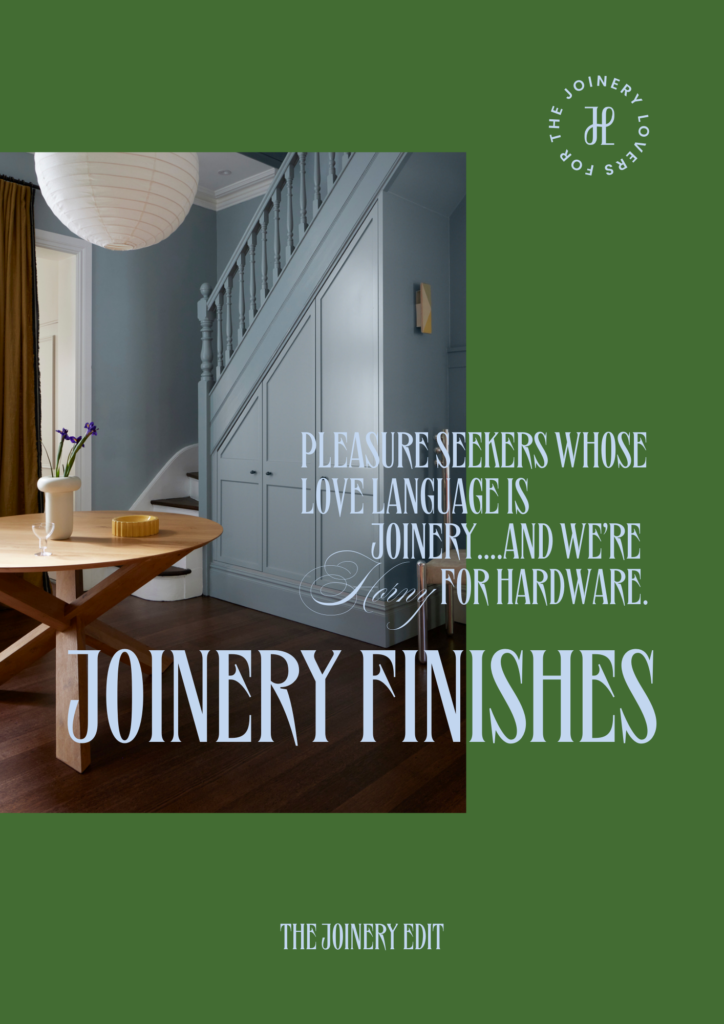More than ever, clients are trying to do more with less.
Pre Instagram and Pinterest, the only way we could consume interior design by other designers was through magazines. However, today’s landscape is very different. Designers and clients have access to vast amounts of visual stimulation, which is excellent for the most part. The main downside is when you need to manage a client’s expectations, especially regarding budget.
Countless times, I have been shown a reference image (from a client) where they say something along the lines of:
CLIENT: We love everything about this! We adore the materials, finishes and scale of this XYZ….
DESIGNER: Breaks the news that this beautiful space is uber-costly.
The kitchen joinery is likely to cost north of 300k.
You see, joinery is a significant expense for any project.
I often get asked:
“Why is joinery so expensive”?
OR
“What is the current market rate for a new kitchen”?
And I will always answer like this…
This depends on where you or the client see value and how much they are prepared to spend to gain their perceived value.
- You can have a “Toyota” kitchen
- You can have a “Telsa” kitchen
- You can have a “Mercedes” kitchen
Therefore, it is impossible to really articulate the answer.
However, one thing is sure: when starting any project, being upfront and honest about the budget is essential. Budget is not a dirty word; everyone and every project has a budget.
Once you know the budget, ensure it is realistic. This does come with experience.
Learning how to gauge pricing comes with experience, so if you’re still scratching your head and coming up with a multitude of questions, read on. I will share the simple way I subtract the guesswork with joinery pricing. Starting right back at the beginning:
For example, cost will influence many design decisions if a client wants to spend 40k on a custom kitchen (not including appliances). For the record, 40k is plausible, but it will require compromise.
This is my step-by-step process for delivering a scheme on budget whilst growing my joinery-specific pricing knowledge!

Client briefing + budget
Goals of the project – understanding current pain points, not enough storage, etc
Budget – what do they want to spend, and is this realistic.

Mood/Concept
This stage is selling the idea and communicating the concept clearly to the client.
This isn’t a literal representation but a design direction with one or two overarching ideas.
If you have 40k for a kitchen, you must be mindful not to oversell the idea. For example, natural stone benchtops, a stone splashback, and a stone shelf could quickly gobble up half the budget in a heartbeat!
Knowing where to splurge and save is important in clearly explaining the concept to the client.

Design Development
Drawings | floorplans, elevations, and 3Ds
Illustrate and communicate to the client how the project may look/feel.

Tender Drawings
Itemise the joinery into numbers, allowing you to pull each item out for detailed drawings. The joinery numbers are referenced in the schedules.
This also is helpful for any conversations with consultants where you can refer back to “JB.04” without saying “the media unit in the basement”, as large homes often will have several built-in media units.
I also use the codes to distinguish which level the joinery is on:
- JB.01 – Joinery basement
- JG.01 – Joinery ground
- JF.01 – Joinery first

Spilt Testing
I will do this a few times on a quote, especially if I know the joiner and can get away with it.
This enables me to grow my knowledge of how finishes and details directly affect pricing.
The client often won’t know I have “options” for tender, as we will be 95% sure of finishes at this stage.
I do this for my professional development, so I know the “X” finish is 40% higher than the “Y” finish.
Or I have something I am desperate to specify—I will spec the finish as an option so I can gauge where it falls on the pricing spectrum. I am waiting for some split testing on Forbo Linoleum for a study.
I ask that the joiner split out the tender pricing to see how the finishes compare. For example, I will note can they please note on the quote the finishes like this:
J.04 in Laminate $3592.00
J.04 in 2Pac Poly $4562.00
The pricing can only be used as a guide, as $$$$ constantly fluctuates; most joiners’ quotes are only valid for 28 days, and I have personally seen how much variation can occur to a quote if the 28-day lapse.
It helps when you have an ongoing relationship with a joiner, as they are more willing to do this AND always always always say thank you!
Sure, some will be pissed at you – but given that designers give clients options – I think it’s fair for joiners to give designers options since we effectively become their clients working on behalf of the client and feeding work directly to them.
And you never know; the joiner might relish learning more about finishes they haven’t used before – knowledge is power!
If you already have everything drawn and the only extra work is asking for a pricing option on the schedule, then it is a little work for the reward of getting some intel and local industry rates.

The Ulimate Joinery Finishes Guide
This complete guide covers both common and lesser seen finishes. Aimed to ignite curiosity, encourage experimentation, and drive you to explore new joinery finishes.
Digital Resources Available Here

Comments +